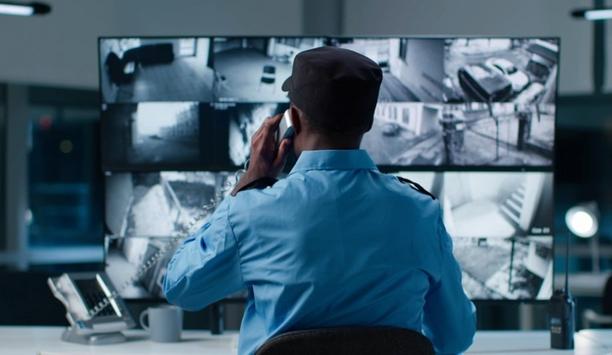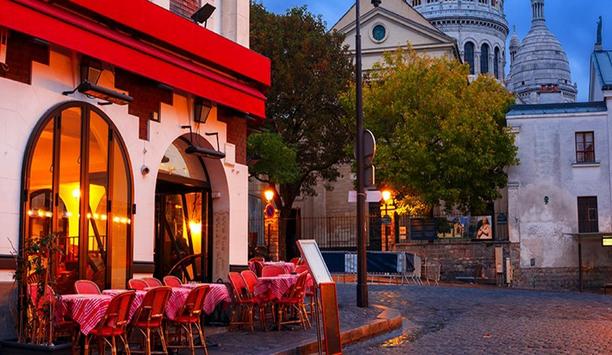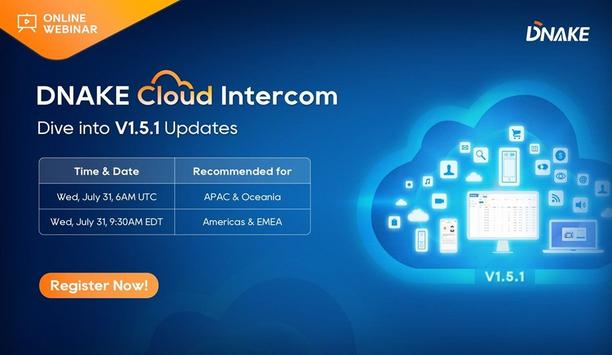The institution
Situated in Bridgeport, Connecticut, St. Vincent’s Medical Center is a 473-bed community teaching and referral facility with a Level II trauma center, as well as a 76-bed inpatient psychiatric facility located 25 miles away in Westport. This comprehensive medical centre provides a full range of inpatient and outpatient services with regional centers of excellence in cardiology, surgery, cancer care, orthopaedics, diagnostics, women’s and family services, behavioural health, senior health and an array of specialised services. St. Vincent’s Medical Center is a subsidiary of St. Vincent’s Health Services which includes St. Vincent’s Behavioral Health Services, Westport Campus, St. Vincent’s College, St. Vincent’s Special Needs Services and St. Vincent’s Medical Center Foundation.
Operational overview
St. Vincent’s has an active medical staff of 500 physicians representing a comprehensive range of more than 50 specialty and subspecialty medical and surgical disciplines. Also affiliated with two medical schools—University of Connecticut School of Medicine and New York Medical College—St. Vincent’s remains as one of the largest institutions controlled by Ascension Health.
Strategic challenge
In one of the more innovative uses of technology, the City of Bridgeport plans to integrate with more facilities than St. Vincent’s—financial institutions, retail organisations and other high risk areas—to develop a systematic approach to mitigating risk. “We’re located on one of the busiest intersections in the city,” Laveneziana says. “The city’s goal is to have the capability to tap into our server and use the city’s incident command centre technology to manage safety risks outside of our facility grounds when deemed appropriate.”
The solution
Nextiva® Video Management Software, Encoders and IP Cameras
The bottom line
To uphold its reputation as a leading and safe medical facility, St. Vincent’s understands the important function that security plays in its community. Taking a leadership role in the development of strategies to mitigate security risks, campus management plans and coordinates innovative security measures. Over the past several years, the St. Vincent’s security platform has evolved to a feature-rich system able to accommodate business challenges.
When Joe Laveneziana, Director of Safety and Security at St. Vincent’s Medical Center, first joined the organisation, he worked to outline three key security objectives to improve overall safety on campus: a technology-driven solution that will help minimise security personnel and staff; improvement of key performance indicators such as a quick response to potentially dangerous situations and investigative support for litigious cases; and aid in preventing crime in and around neighboring areas to the hospital. Laveneziana explains, “One of my first priorities at St. Vincent’s Medical Center was to build an infrastructure that would leverage our existing access control with video surveillance.
In 2009, St. Vincent’s began construction of a new parking garage. With this new infrastructure, there was a need for upgraded surveillance equipment that would connect wireless devices to cameras allowing transmission of video back to the central hub. “With a legacy system in place, we looked at newer technologies and associated costs around applications and considered ones that could be easily leveraged for future upgrade initiatives,” comments Laveneziana. To accomplish this task, the team evaluated three video management software platforms. In the end, St. Vincent’s selected Verint’s Nextiva Video Management software to help monitor the new parking facility as well as the disparate site locations throughout the campus from the central monitoring hub.
 |
| The Nextiva’s IP cameras deliver high-definition video up to 2 megapixels in resolution |
Nextiva’s comprehensive video management software platform provides St. Vincent’s with the ability to streamline video management functions and make sense of vast amounts of data collected by cameras and other business systems. The powerful, fully integrated video management software captures high-quality video images from analogue and IP cameras, quickly recalls live and recorded video for investigations, and provides a scalable, open platform for future system expansion. “We have been extremely pleased with Nextiva’s video management software and its ability to help monitor our campus, maximise operational efficiencies and ultimately create a stronger security presence,” adds Laveneziana.
Viewing live and recorded video is extremely important for security departments that rely on technology, rather than security staff, to monitor extensive campus grounds. However, the video management software is just a fraction of the overall system. Recently, St. Vincent’s upgraded its Nextiva Video Management software in conjunction with the installation of Nextiva S5000 series IP megapixel cameras to help manage risks associated with the facility. With more than 150 cameras on campus, the Nextiva’s IP cameras deliver high-definition video up to 2 megapixels in resolution. The multi-streaming technology allows St. Vincent’s to customise their compression formats to meet specific surveillance requirements while combining excellent video quality with ultra-efficient bandwidth management.
“The Nextiva IP cameras provide us more coverage on campus with one camera,” shares Laveneziana. “We are extremely pleased with the higher resolution quality and level of detail provided for forensic purposes.” The Nextiva IP cameras use Nextiva’s centralised device administration, system-wide device monitoring, and intelligent video distribution to make security initiatives more manageable, proactive, and effective. Plus, the IP cameras can be deployed side by side with analogue cameras using Verint® video servers. This helps St. Vincent’s leverage existing video investments and eases migration to IP video.
In order to capture quality video, a security system must have reliable encoders. St. Vincent’s initially deployed Nextiva’s S1708e encoders—an 8-port video encoder with dual steam, MPEG-4 SP video and 4CIF/30fps—to help encode video in their large-scale environment. By providing on-board analytics, these encoders analyse images at the point of capture, eliminating the need to send all video to centralised servers for analysis. This can significantly reduce network bandwidth, storage, and server requirements, while providing highly accurate image analysis.
Still taking full advantage of the Nextiva S1700e series encoders, St. Vincent’s recently added the Nextiva S1800e series from Verint. With the increase in cameras throughout their environment, the H.264-enabled encoding technology provides a comprehensive feature set that includes storage on the edge – a failover mechanism that ensures video is recorded if connection with the central recorder server is lost – and camera tampering detection.
St. Vincent’s has already seen significant benefits from the Nextiva Video Management software upgrade and deployment of Nextiva IP cameras. Working in conjunction with the City of Bridgeport, the campus was able to track a convicted felon. Leveraging the megapixel technology, St. Vincent’s quickly identified the perpetrator, worked closely with the City of Bridgeport Police Department, and helped to dispatch a law enforcement team via mobile response. In another instance, a suspicious item was left behind and with the aid of high-resolution cameras and an alert security team, the item was immediately seized by authorities and inspected for threat.
Based on the success of the current Verint solution, St. Vincent’s extended its investment in the Nextiva platform to help monitor activities throughout the campus, in its new Elizabeth Pfriem SWIM Center for Cancer Care, and on surrounding city streets.
"We have been extremely pleased with Nextiva’s video management software and its ability to help monitor our campus, maximise operational efficiencies and ultimately create a stronger |
St. Vincent’s understands that security threats in hospitals continue to evolve. The day-to-day management of a variety of security risks including visitors, gangs and behavioural health issues is too cumbersome for manpower alone. Laveneziana attributes the success of St. Vincent’s security infrastructure not only to the technology advancements, but also to his team. “We have 60 security officers that service both campus and off-site locations,” comments Laveneziana. Manpower coupled with advanced technology, has been the key to securing St. Vincent’s.
“Our job is to operate a cost-effective security operation with maximum efficiencies and technology that augments our security staff,” Laveneziana adds. “We evaluate risk, implement cutting-edge technologies and demonstrate the value of security.”
Regulatory compliance
The safety and security of all students, faculty, staff and guests on the campus grounds are of the highest concern to St. Vincent’s. As such, Laveneziana’s team is tasked with ensuring regulatory compliance, emergency management, response and safety mandates. To show their commitment to safety, St. Vincent’s is participating in the OSHA Voluntary Protection Program (VPP) certification process. VPP was created by the United States Department of Labor’s Occupational Safety and Health Administration (OSHA) and is designed to recognise workplaces that have achieved exemplary occupational safety standards. Leveraging captured video from strategic areas within its medical facilities, Verint’s IP video portfolio has helped St. Vincent’s promote health and safety mandates and create a more proactive, effective approach to ensuring regulatory compliance.
St. Vincent’s Medical Center is also responsible for the safety and security of St. Vincent’s College, an educational institution located on hospital grounds. Compliance with the Jeanne Clery Disclosure of Campus Security Policy and Campus Crime Statistics Act is a mission-critical objective for Laveneziana’s team. The federal law requires colleges and universities to disclose annual information about campus crime and security policies. With Nextiva, St. Vincent’s is leveraging state-of-the-art technology to deter threats and quickly resolve incidents and investigations taking place on campus grounds.
In order to protect confidential patient information, St. Vincent’s must also comply with the HIPAA privacy rule. The HIPAA Privacy Rule provides federal protections for personal health information held by covered entities and gives patients an array of rights with respect to that information. To help restrict access to patient records storage in addition to security-sensitive areas such as labs and pharmacies, the medical complex leverages an advanced access control platform to ensure that its facilities are secure 24/7. The integrated access control system interfaces with Nextiva to centralise security operations on a single platform.
An integrated vision for the future
"We are extremely pleased with the higher resolution quality and level of detail provided for forensic purposes" |
While St. Vincent’s has initiated and completed several major security project upgrades in recent years, one of the most innovative projects has yet to commence. Recently serving on a panel with the City of Bridgeport, Laveneziana helped design an integrated solution that would remotely connect city cameras with the hospital’s security system. The City has recently received a grant from the Department of Emergency Management & Homeland Security (DEMHS) to improve city-wide security measures. As such, the City will be implementing IP cameras with megapixel technology to help monitor its streets and neighborhoods. Under the City’s expanding security infrastructure, it will be able to integrate with IP cameras located at proprietary sites such as St. Vincent’s. This will allow the City of Bridgeport to view neighborhood video in an effort to deter community crime and provide another forensic evidence tool. The Nextiva platform is flexible and allows for easy export of video as required under the specification of City of Bridgeport video surveillance infrastructure.
“We proposed the Nextiva IP megapixel cameras on our campus due to ease of integration with the City of Bridgeport Police Department’s proposed infrastructure,” Laveneziana adds. “The city’s goal is to have the capability to tap into our servers, leveraging the city’s incident command center technology to manage safety risks outside of our facility grounds when deemed appropriate.”
In one of the more innovative uses of technology, the City of Bridgeport plans to integrate with more facilities than St. Vincent’s—financial institutions, retail organisations and other high risk areas—to develop a systematic approach to mitigating risk. “We’re located on one of the busiest intersections in the city,” Laveneziana says. “The city’s goal is to have the capability to tap into our server and use the city’s incident command center technology to manage safety risks outside of our facility grounds when deemed appropriate.”












